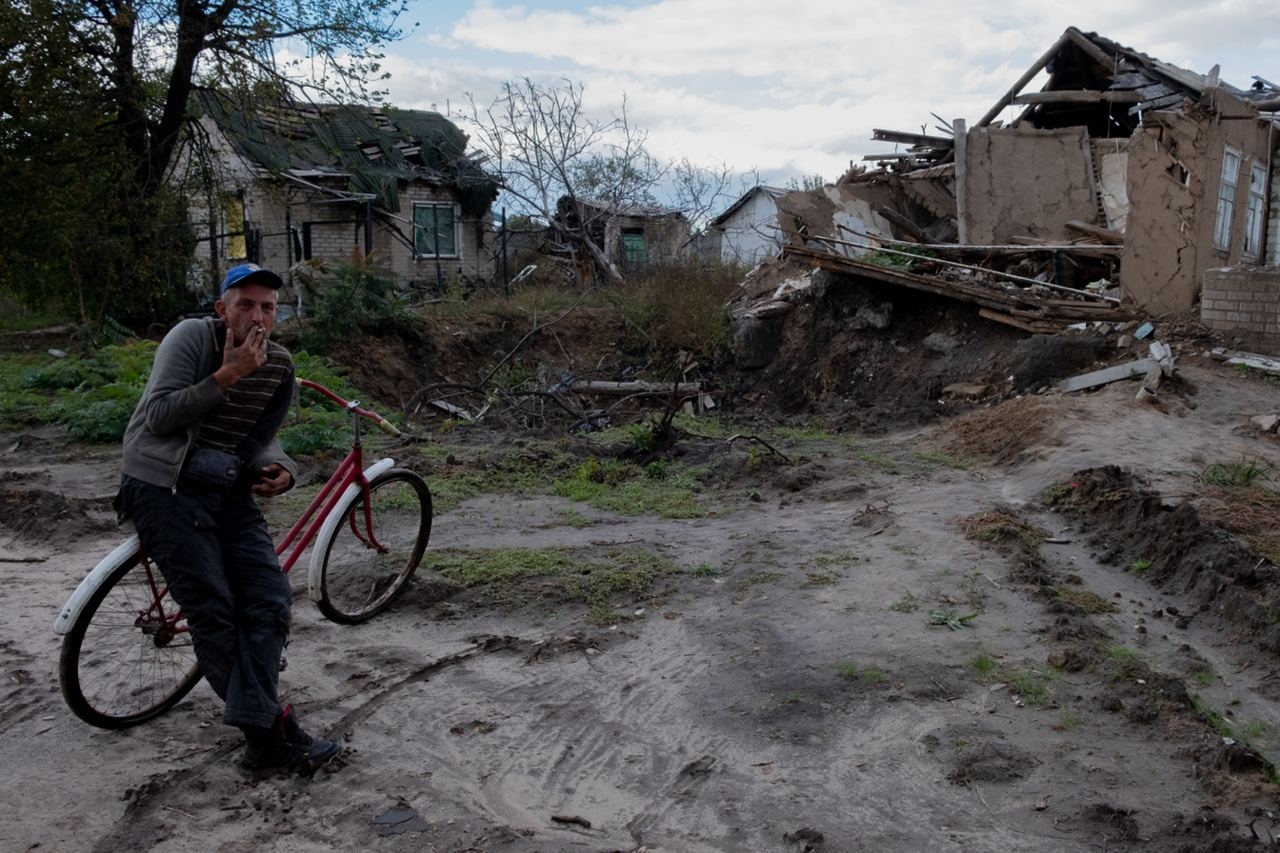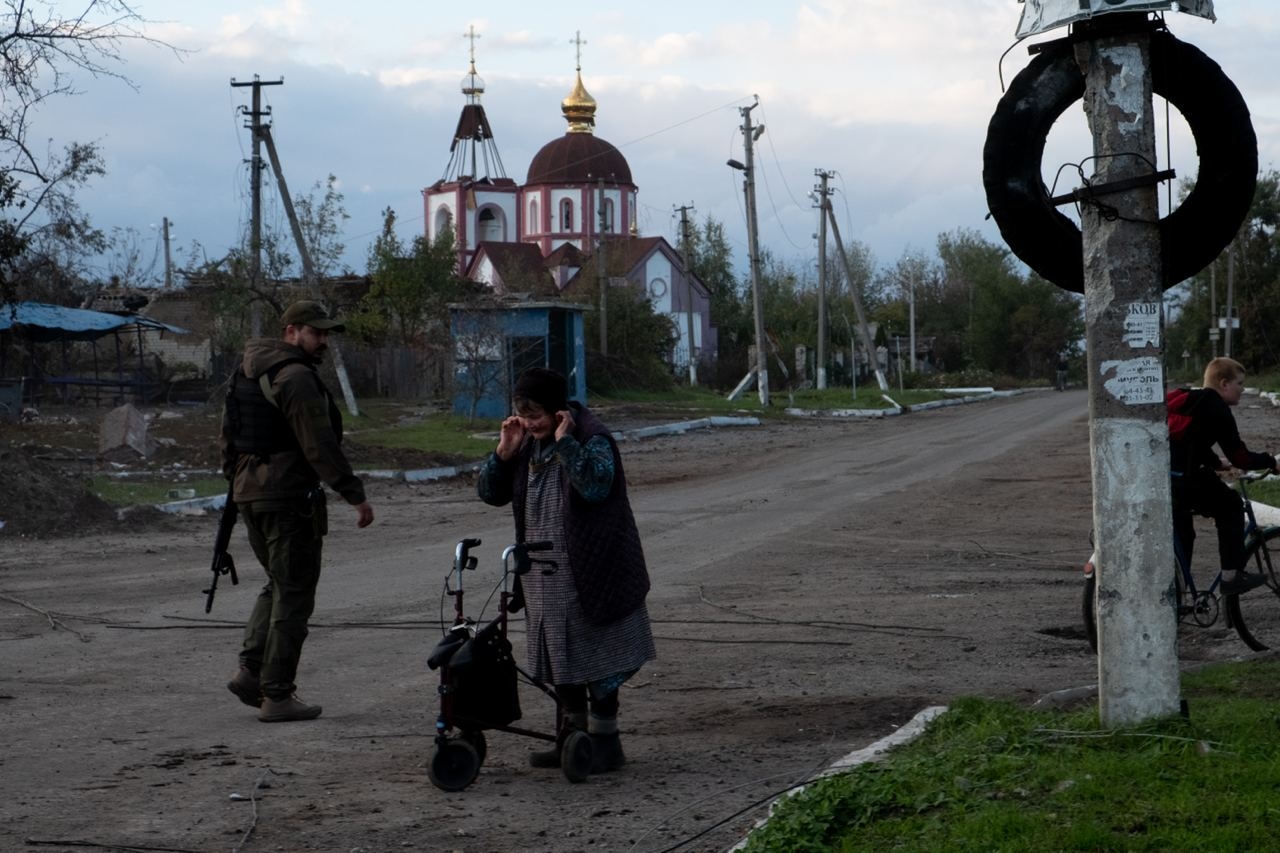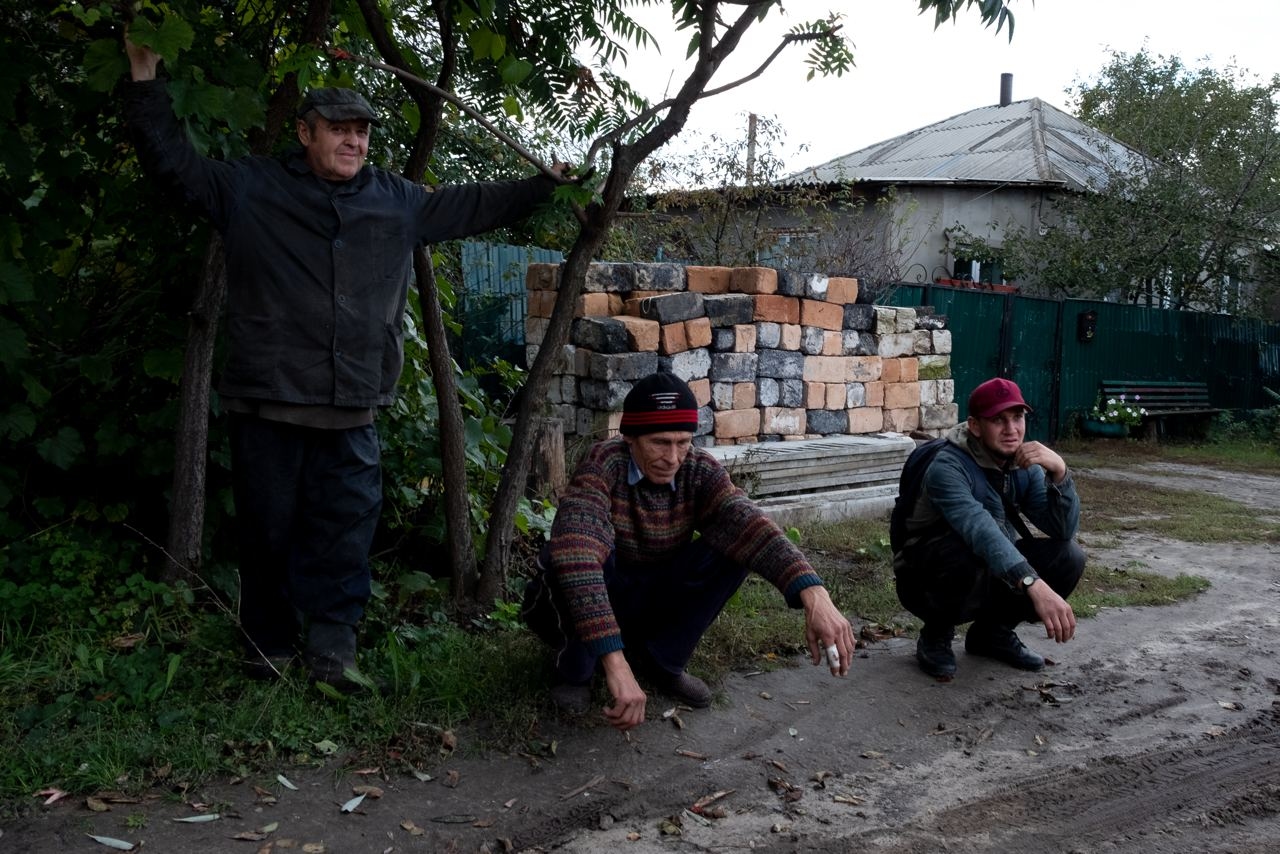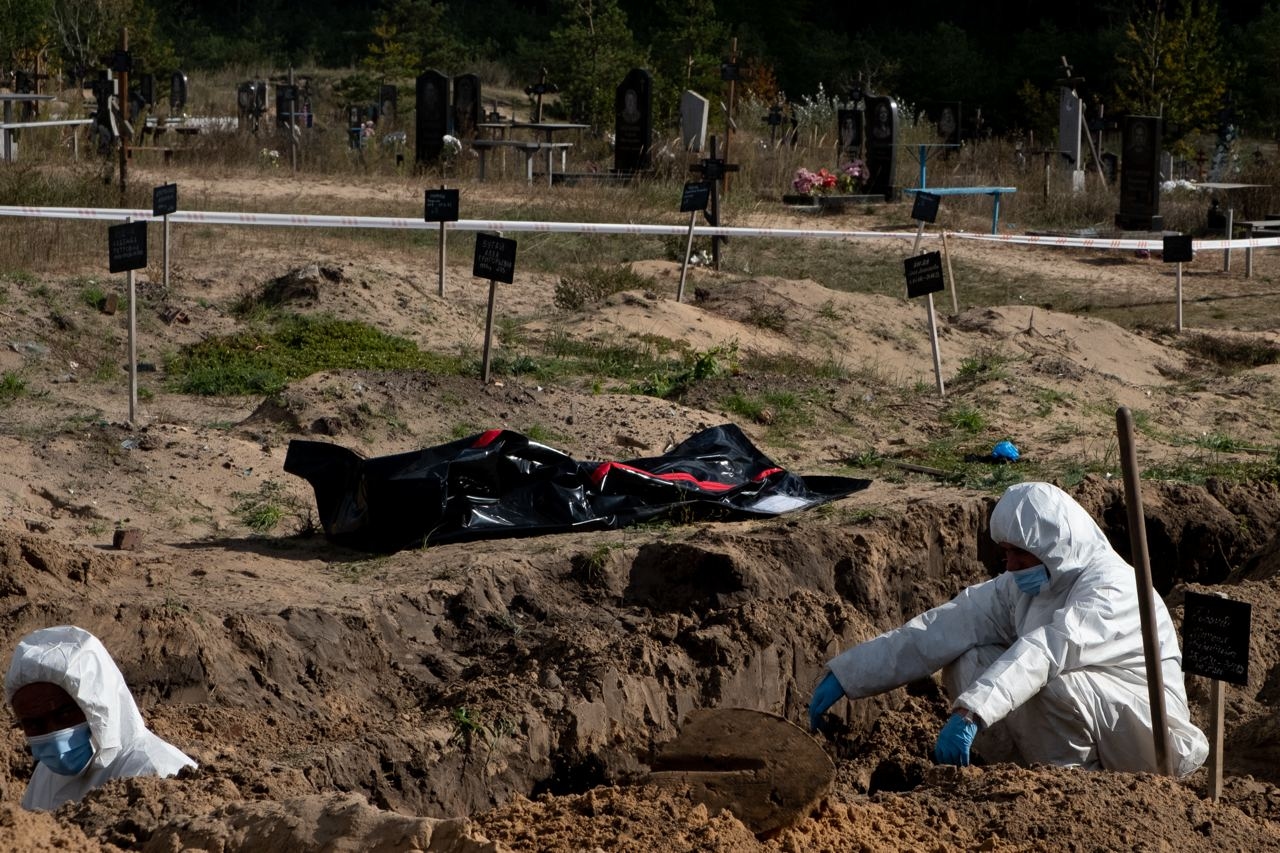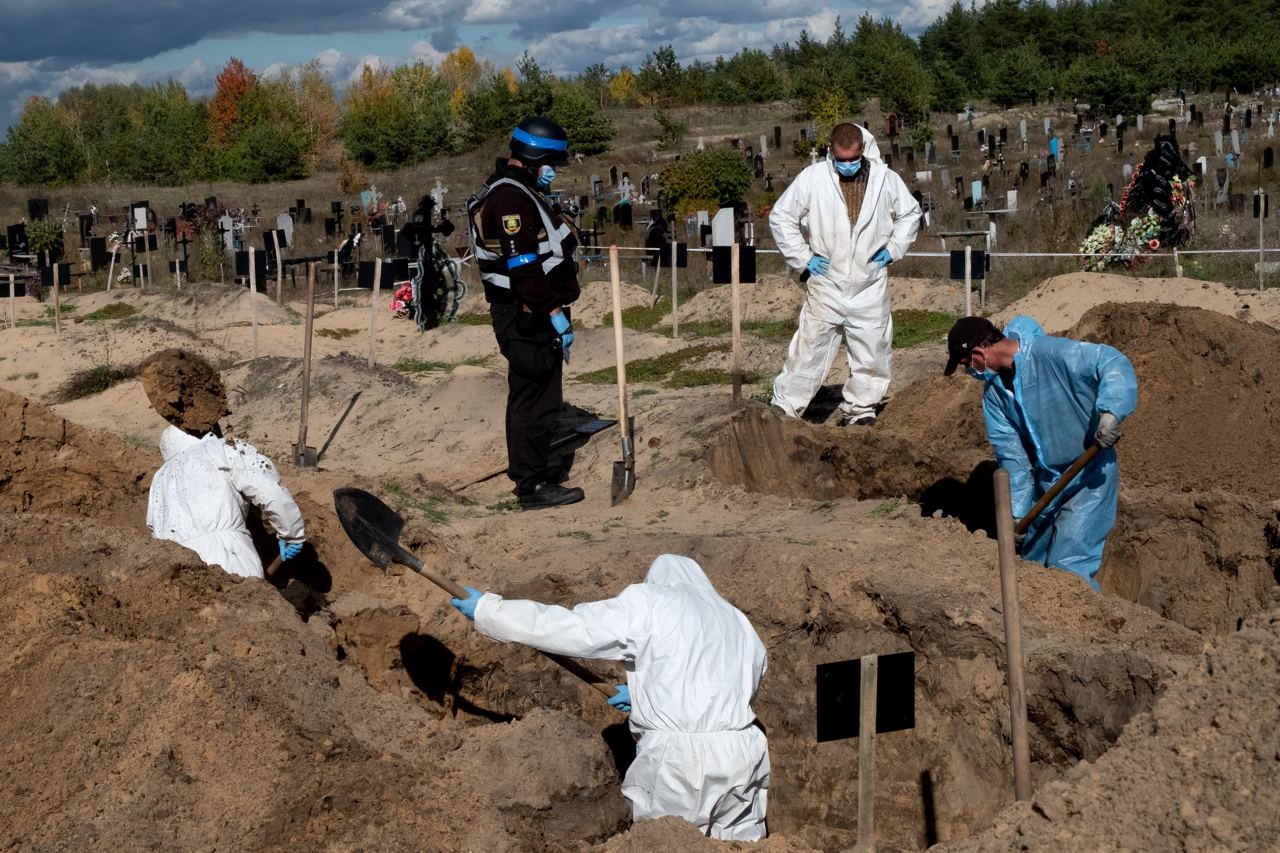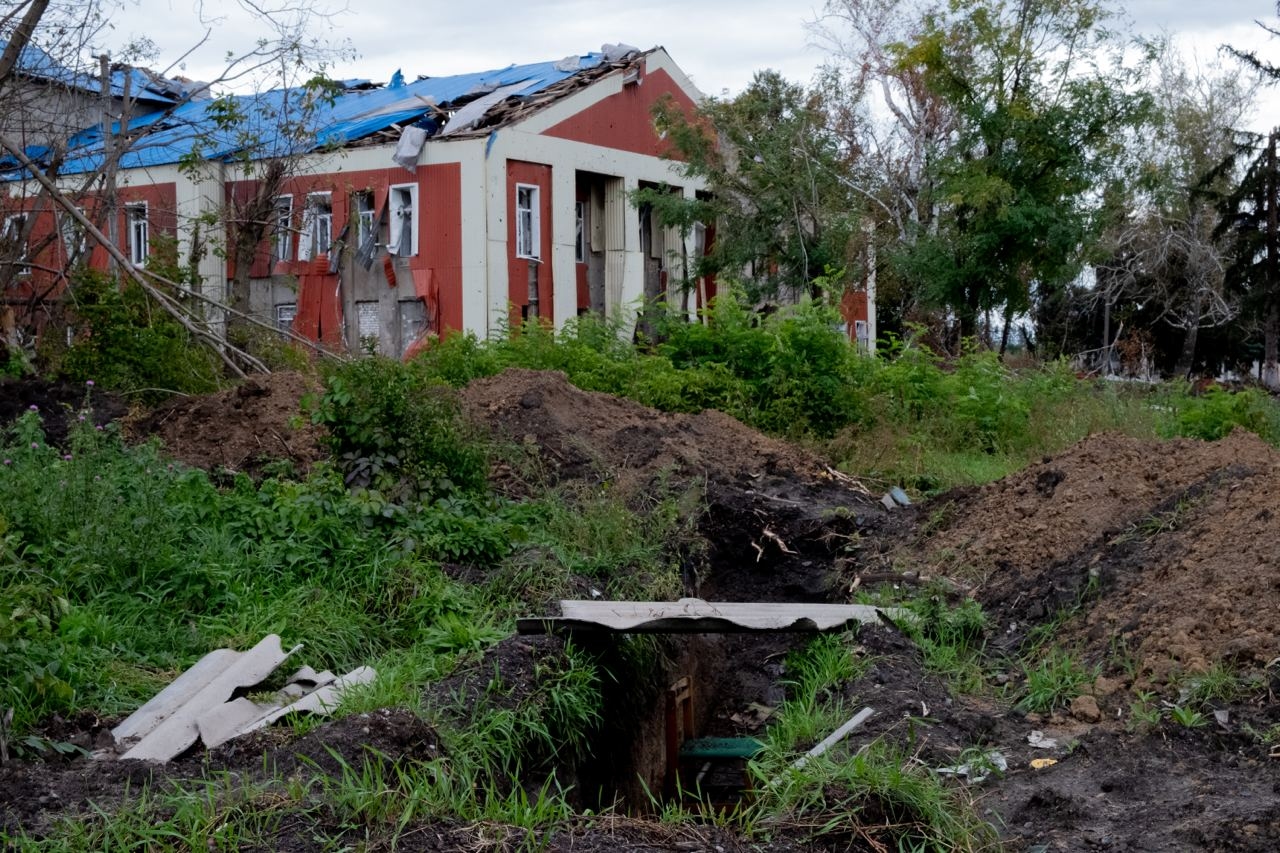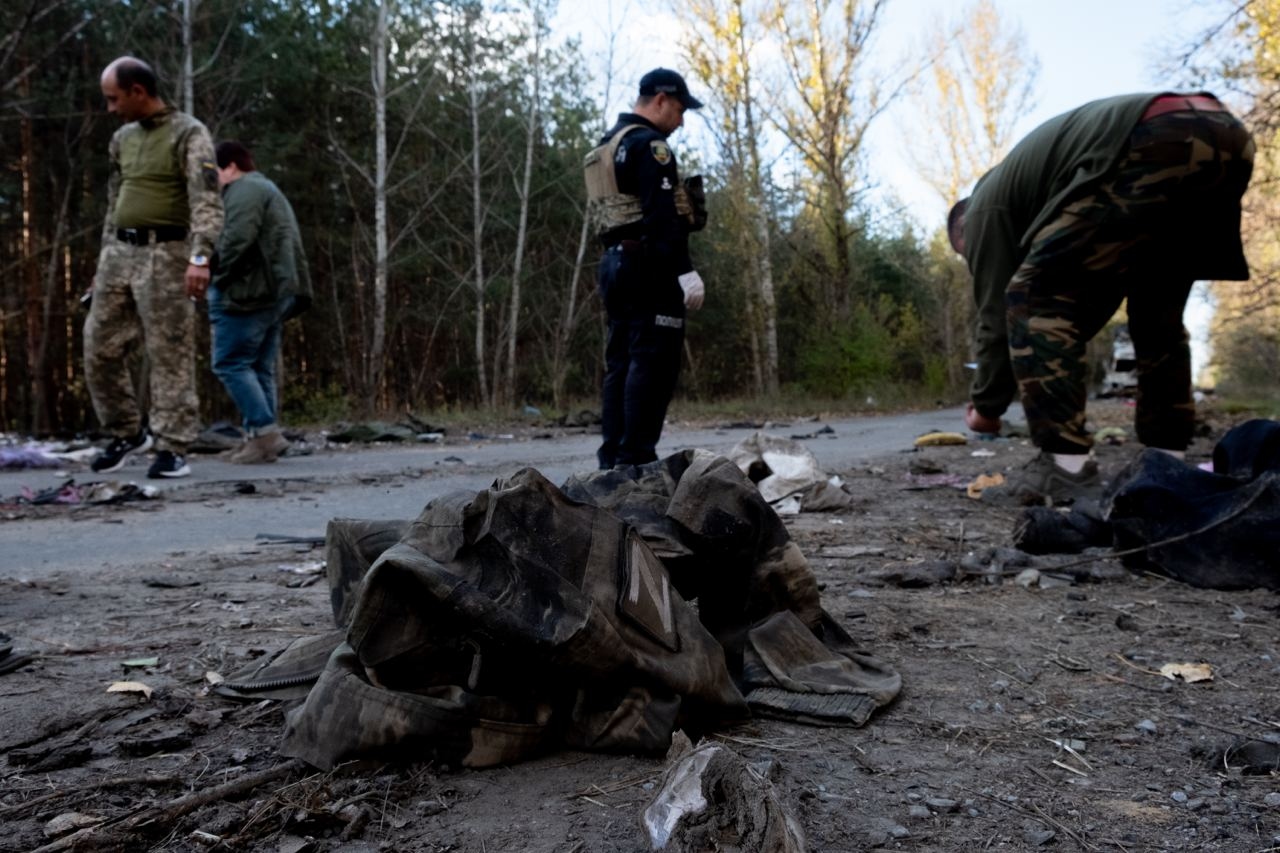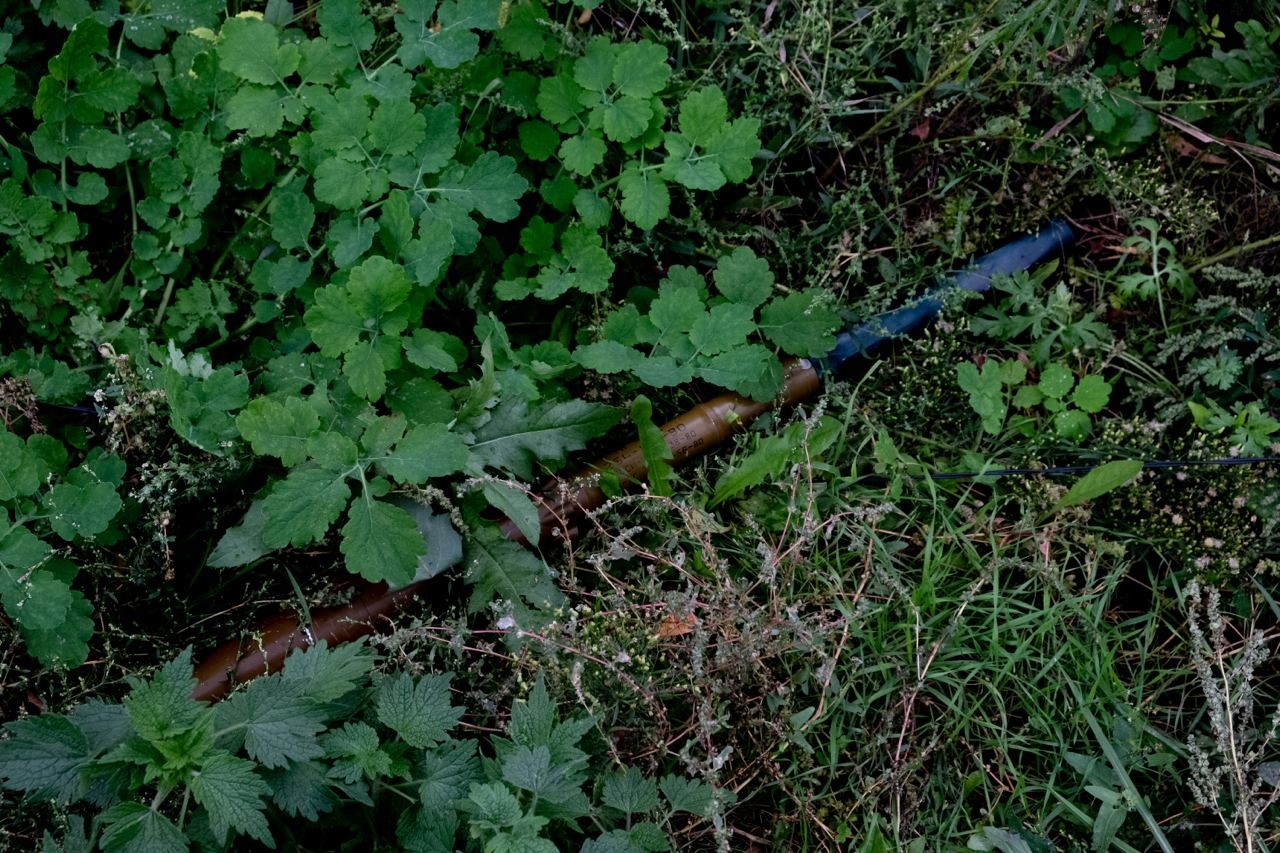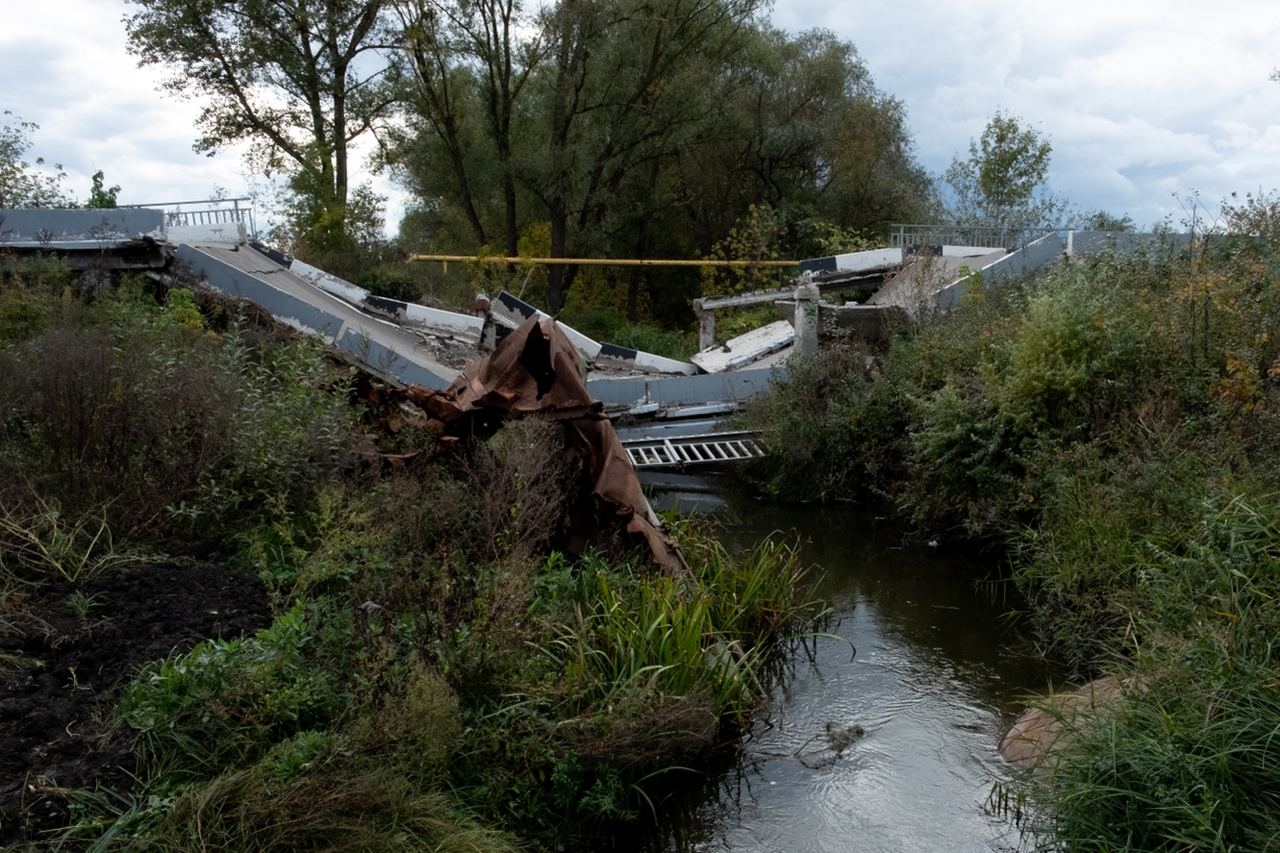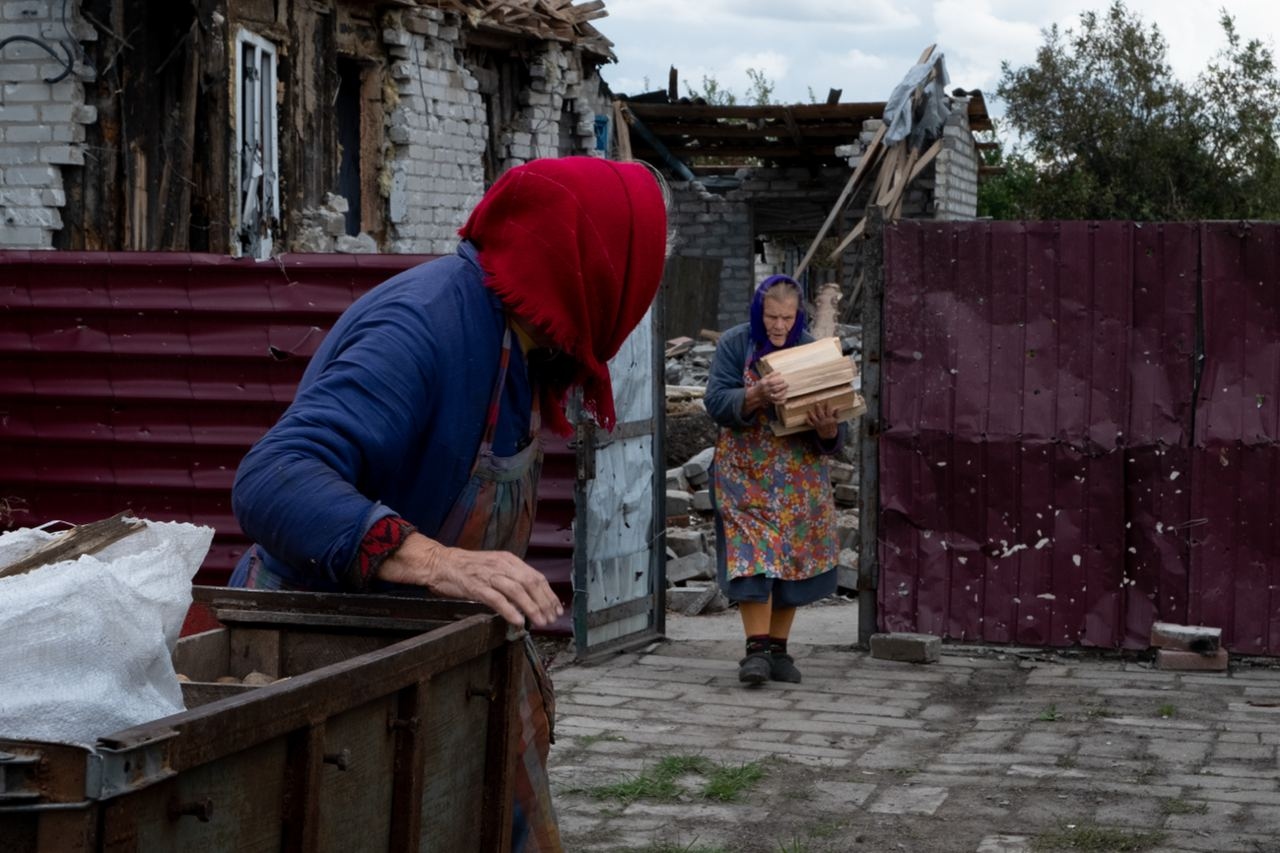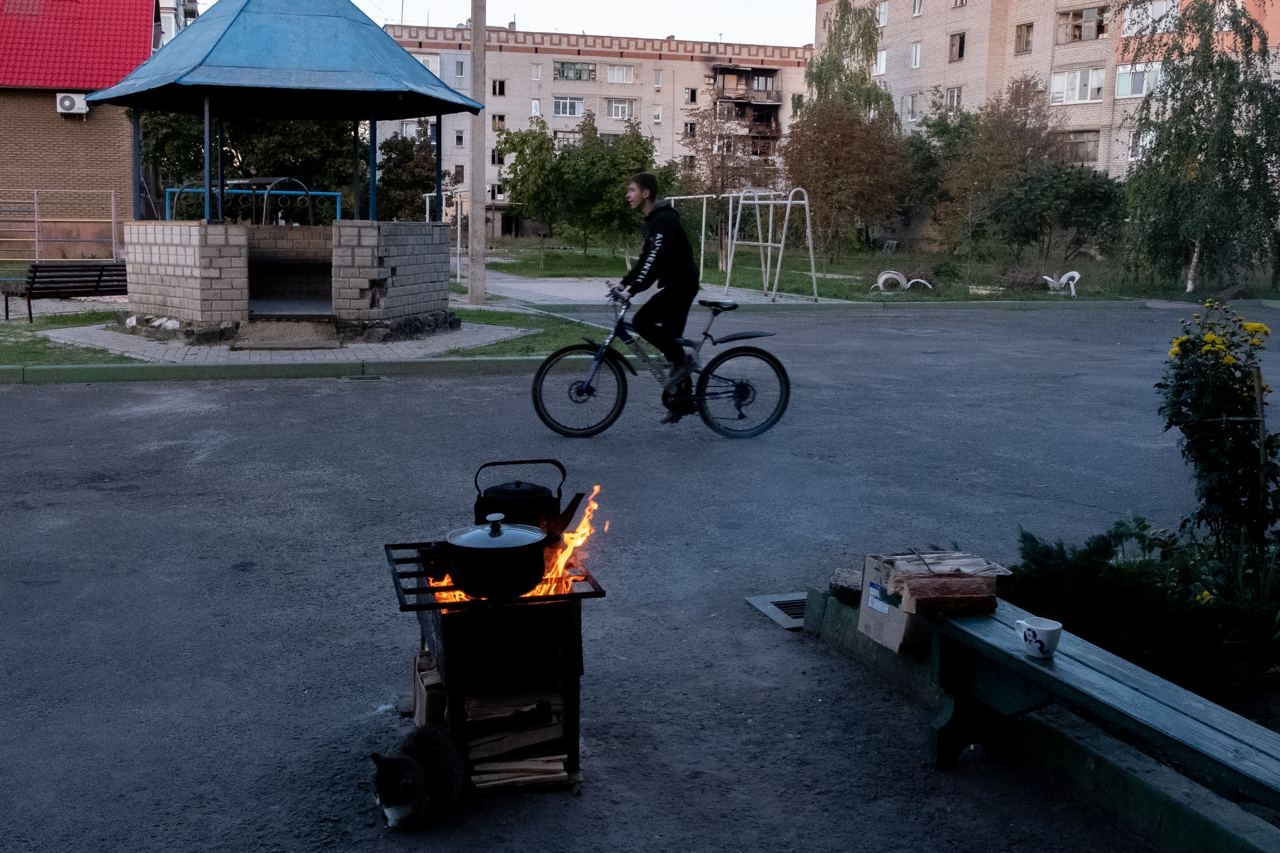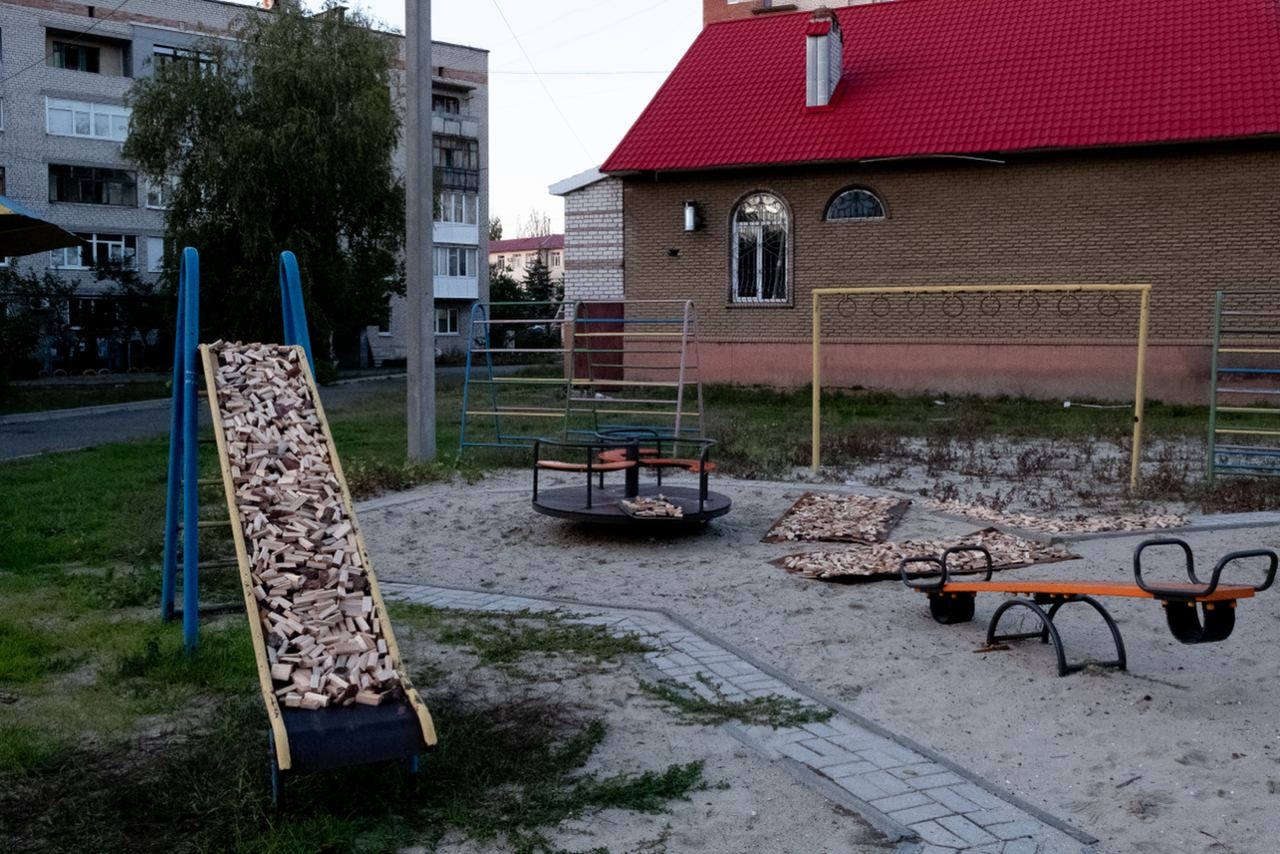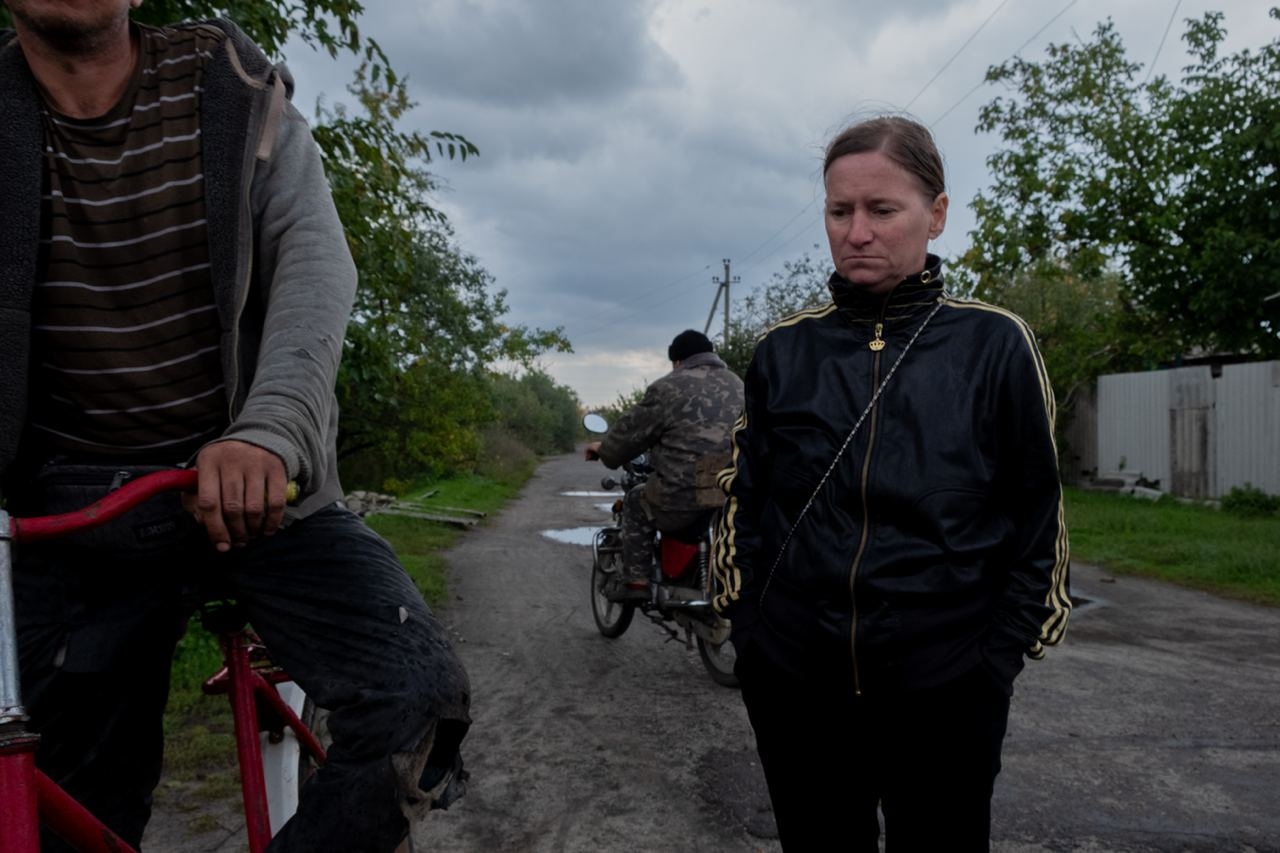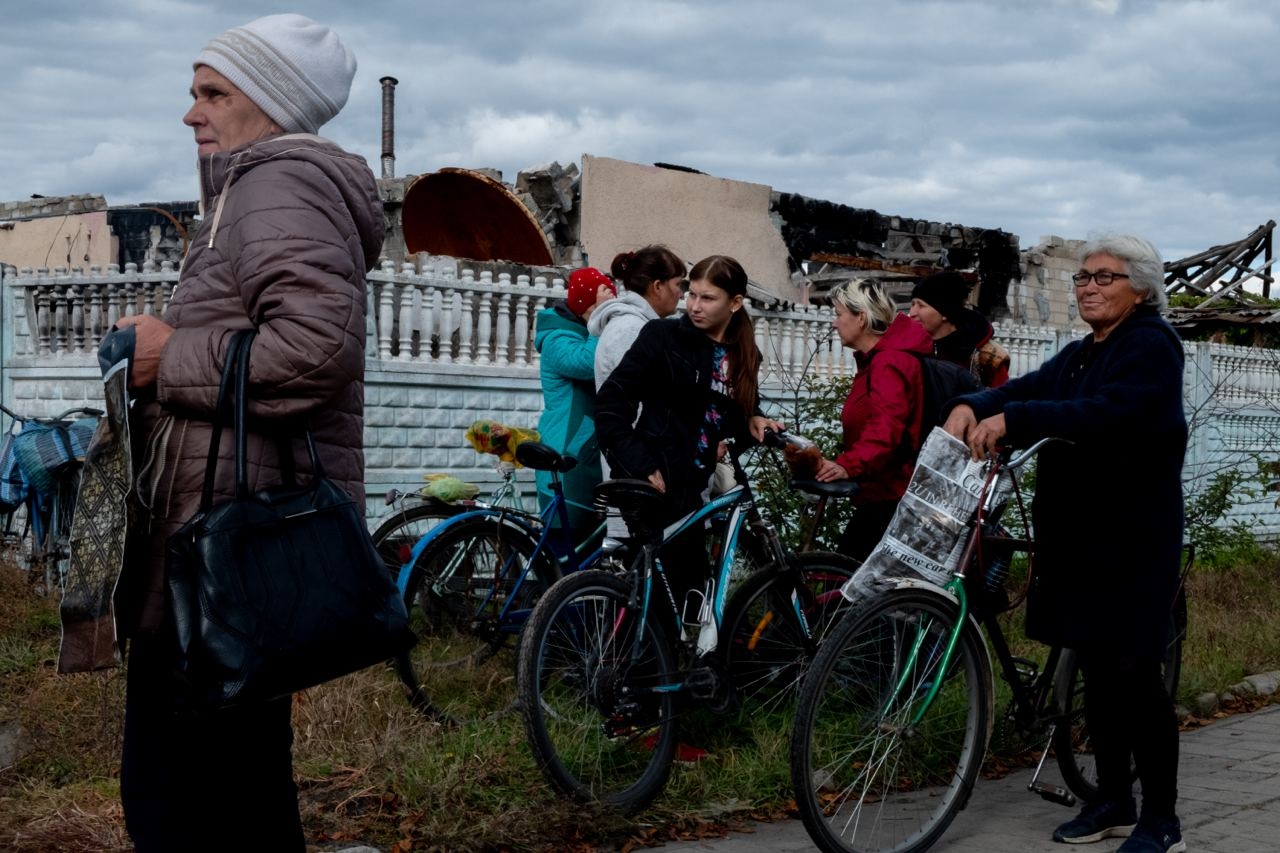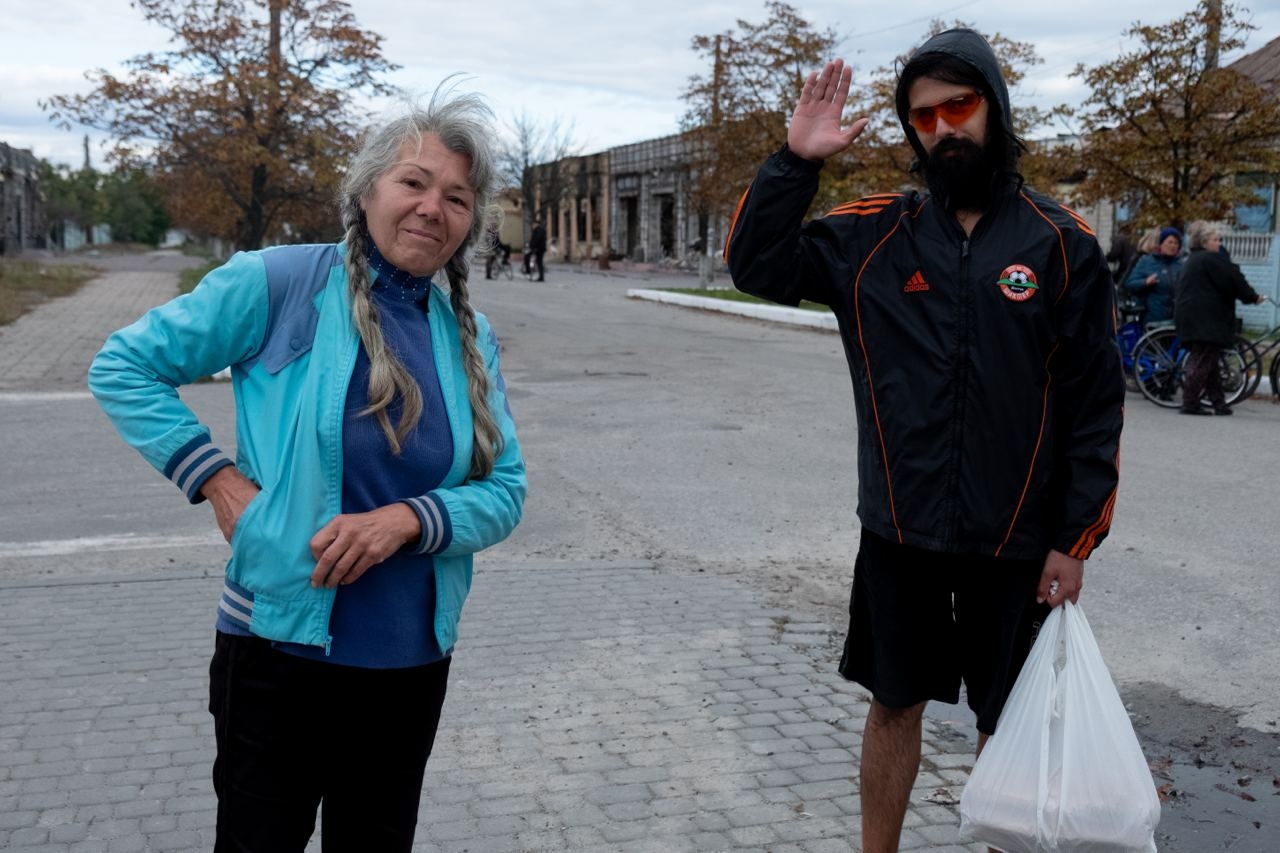LYMAN, Donetsk Oblast – On a quiet road lined by pine forest leading into the city of Lyman, the remains of a frantic but unsuccessful escape clutter the roadside. Four repurposed civilian cars, burnt-out and upturned, mark the spot where the flight of Russian soldiers met an abrupt end.
Just beside them, the dense green pixel camouflage of charred Russian military uniforms stains the pavement, scattered between personal belongings, toothbrushes, and Moscow metro tickets.
The members of this frantic convoy were fleeing the village of Drobysheve into Lyman, unaware that the latter was already effectively surrounded by the Ukrainian army. Eight Russian soldiers died here, according to police officers on the ground.
The bodies of those killed on the spot have already been removed from the roadside. Only one member of the party who had crawled into the forest in a hopeless attempt to escape still remained in his final resting place, his hand suspended in the air by rigor mortis.
“He wanted his piece of Ukrainian land,” a police officer on duty at the scene said, “and he’s got it.”
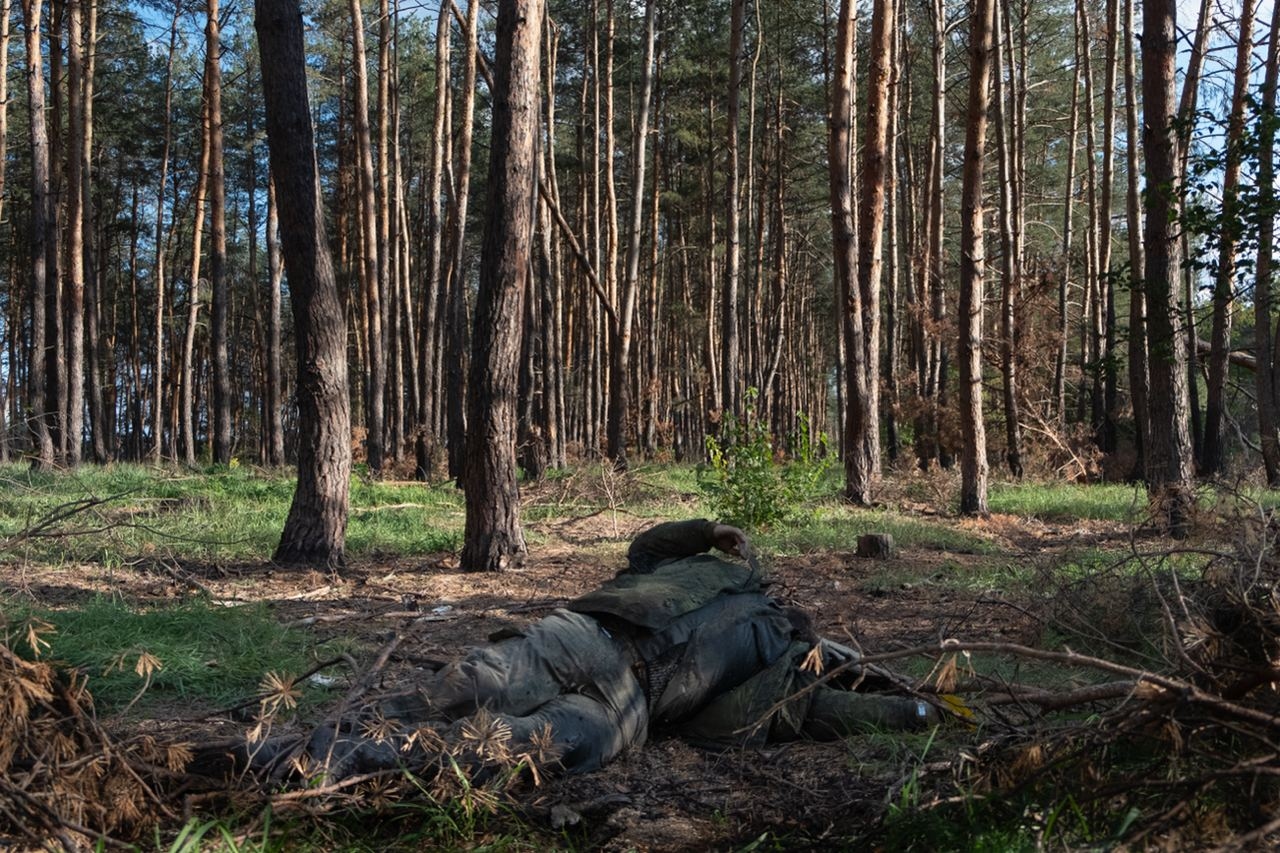
Coming three weeks after Ukraine’s lightning counteroffensive in Kharkiv Oblast, on Oct. 1, the defeat in Lyman was a major setback for Russia’s withering war aims for numerous reasons.
Firstly, Ukraine’s recapture of Lyman, a city in Donetsk Oblast with a pre-war population of 20,000 that had been occupied by Russia since mid-May, proved once again the capacity of Ukraine’s forces to conduct large-scale combined arms offensives against an entrenched opponent, this time without the element of surprise.
The loss of Lyman was also particularly embarrassing for Russia’s absurd push to annex four more regions of Ukraine on the back of sham referendums. With Ukrainian troops entering the city the day after the illegal annexation was signed into law by Russian dictator Vladimir Putin, jokes flooded the internet about Lyman being "a part of Russia" for less than 24 hours.
Most morbidly, while official figures are scarce, videos, third-party analysis and anecdotal evidence point towards an astonishing number of Russian soldiers killed in the offensive.
A spokesperson from an unnamed Ukrainian army unit stationed in Drobysheve, who identified himself only as Vladyslav for security reasons, spoke to the Kyiv Independent about the chaotic and violent end of Russia’s occupation of Lyman.
“According to our data, when Lyman was practically surrounded, there were about 5,000 Russian soldiers in the city,” he said. “How many of them made it out, how many were caught, how many are still running around, and how many were put to sleep forever, you can think about for yourself.”
Closing the trap
To achieve the final encirclement of Lyman, Ukrainian forces first had to conduct challenging, fiercely contested river crossings at several points along the Siverskyi Donets River, which had served as the line of contact since Russia occupied the northern bank in May.
While one arm of the pincer crossed the river east of Lyman and liberated the town of Yampil, the other crossed near Sviatohirsk, pushing village by village towards Drobysheve.
Artem, an infantry officer stationed on the road into Lyman forbidden to give his full identity, showed the Kyiv Independent video footage of the first stages of the crossing. In a relaxed mood, as if on a fishing trip, five infantrymen sit in a small camouflage motorboat as it makes its way out of the bushes to cross the short stretch of water, while the whistle of incoming artillery is heard nearby.
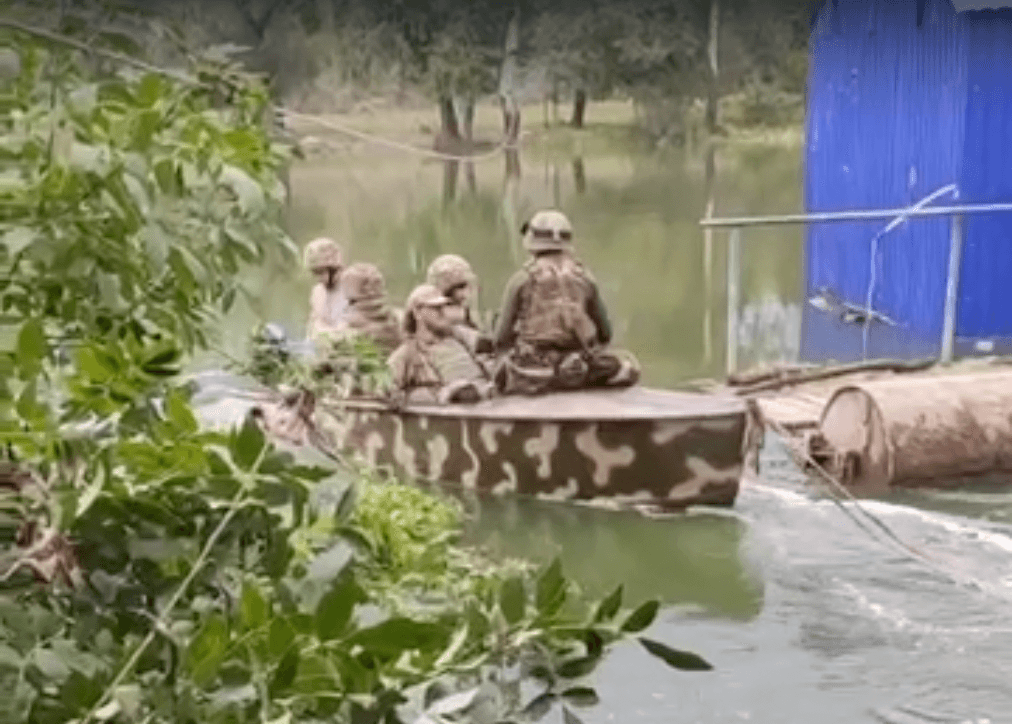
“We took over a month to capture Drobysheve,” Artem, said. “It was one united operation, and the river was a barrier for us just as it was for them back in May.”
“At first, we could only cross in small groups, one boat at a time... They were throwing everything at us, Grad rockets, mortars,” Artem, 45, said. “They couldn't see us, but they knew we were there, and their job was to cover the whole area we could be crossing with fire.”
Deafening fog
On the central street of Drobysheve, hardly a single building remains that has not taken heavy damage from artillery fire. Crude, freshly dug trenches mark the positions where Russian troops attempted to dig in and defend the road. Unlike in the swift push of the Kharkiv Oblast counteroffensive, Ukrainian forces had to pound Russian positions in the town with artillery before infantry was sent in to complete the job.
As always in war, those who suffered most in the hard-fought battles were civilians.
In preparation for counteroffensive operations, the Ukrainian government has consistently called for its citizens to evacuate occupied settlements to safer areas further from the front line. Attached to their homes and without options for alternative accommodation, many residents nonetheless make the choice to stay put.
While Russia took the area in only four days, the Ukrainian operation to liberate it took much longer, with understandably more desctruction. “For twenty days until Sept. 30, they (Ukrainian forces) were hitting us hard,” said Drobysheve resident Nataliia Loboda, 65. “We hardly came out of our cellars at all. It was scary, even more so than when the Russians came in in May.”
For residents of Lyman and the surrounding villages, Ukraine’s counteroffensive was only the final chapter of a four-month ordeal, during which their homes were never far away from the front line.
Even in the quieter periods of the Russian occupation of the city, life was rarely lived outside the four dark walls of residents’ basements, where they sought refuge both from shelling and from unwanted attention from the Russian proxy soldiers stationed in the city.
“We never strayed far from the cellar,” said Yevhen Tryshkovsky, a 23-year-old resident of Lyman. “We would run out to turn the pancakes over, and quickly run back inside.”
In this environment of isolation, the occupiers failed to restore basic utilities and did not bother with conducting sham referendums here as the Ukrainian army continued its approach.
Once the battle to retake the city began, the only information that sheltering residents had to go by was the volume of the shelling and gunfire they could hear from street level.
“We had no idea who was shooting and from where,” said Larysa Chaplyna, a 79-year-old resident of Lyman’s southern neighborhood. “The only thing to do was to shake in fear and cry.”
On the sandy hills of Lyman’s main cemetery, a scene unfolds that is testament to the danger the city’s residents lived under throughout their encounter with Russia’s war.
Reminiscent of a similar discovery in liberated Izium, a large makeshift cemetery contains the reburied remains of 187 people who died since Russian forces entered the city in May. The dates on the crosses range from May right through to September, without any noticeable period of relief.
One by one, emergency services workers in hazmat suits unearth the bodies, reburied with the dignity of plastic body bags, unlike in Izium. Early evaluations suggest that most victims died from explosive-related trauma, according to Oleksandra Havrylko, a police press officer at the scene.
Panicked flight
Ukraine’s methodical encirclement of Lyman was devastating for the Russian soldiers left in the city. Russian positions on strategic street corners in the city stand hastily abandoned, with pots still on the stove and empty vodka bottles on the table. A few meters away, the body of a Russian soldier with a clean bullet wound to the head lies half-sunken, melting into the sand.
“On the tactical level,” recounted Vladyslav, “our main aim was to create the worst possible conditions for the enemy in Lyman as long as they stayed there.”
Tetiana Velichko, 53, who conducted the choir at the local house of culture before the invasion and now stood in line for humanitarian aid, said massive strikes started around the city on Sept. 18.
“It seemed like all parts of the military were here — tanks, rockets, planes, helicopters,” she said. “The only things missing were the battleships and submarines.”
Videos filmed by the Ukrainian troops who liberated the area showed dozens of destroyed Russian vehicles on the road out of the city. At one location, thirteen corpses were found of wounded Russian troops left for dead, domestic cats scavenging on their bodies as they lay on their stretchers.
“Almost all the roads out of the city were under our fire control,” said Vladyslav. “If they weren't eliminated in Lyman itself, our soldiers met them with plenty of fire on the way out in the area of Zarichne and Torske.”
Despite their untenable position, the Russian forces in Lyman are understood to have had orders to hold the city at least until the illegal annexation was signed, to avoid political embarrassment for the Kremlin.
“From open sources we know that the Russian soldiers were asking their commanders to allow them to withdraw from Lyman,” said Vladyslav, “but because Putin had his big speech or whatever it was that evening, they were forbidden from giving the society negative news.”
Nevertheless, some of the more senior Russian ranks began to flee while it was still possible, leaving a mixture of Russian regular troops, proxy forces, and members of the BARS-13 militia unit left in the city to fend for themselves.
“They would keep fighting, even when they had no chances of surviving,” said Vladyslav. “Some of them chose to change into civilian clothes, hide in basements, and try to blend in with the locals.”
“Our police and security services are doing a good job, and they’re still catching them now,” he said. “That machine gun fire we heard from the forest earlier? That's no exercise, they are still out there.”
The road ahead
After success in Lyman and the surrounding area, the world is watching to see whether the Ukrainian army will be able to push further before winter sets in. The new front lines now roughly follow the border of Luhansk Oblast, which was also declared annexed by Russia together with Donetsk, Kherson, and Zaporizhzhia oblasts.
The next major target in this sector of the front is the town of Kreminna, a key potential staging point for an offensive to retake the larger urban areas of Sievierodonetsk and Lysychansk, which Russia occupied in June after over a month of intense artillery bombardment and urban warfare.
Vladyslav was understandably coy about plans for further Ukrainian offensive operations.
“The enemy will see on the battlefield what the plan is,” he said. “Every settlement is a different situation, and we are always adapting our tactics. This is our biggest advantage, that we use modern methods and they, for the most part, are stuck in 1945.”
Less than a month after Russia announced the mobilization of 300,000 new soldiers to replenish its badly mauled regular army in Ukraine, untrained conscripts are already being sent to the front en masse.
“Our guys are doing their job,” said Vladyslav. “If they weren't afraid in the face of a professional army, an amateur army won't change things, whether there is a thousand of them, two thousand, or five coming at you.”
After enduring two fierce battles for their city in the space of five months, locals now face a difficult winter. Many will be forced to remain in their basements with apartment windows blown out and central heating non-existent.
“We don't have anything, no work, no pensions,” said Loboda outside her well-kept garden in Drobysheve. “We just have the potatoes, cucumbers, tomatoes that we grow ourselves and we make do.”
“I'm just glad that it has become quieter. On the first day after the battles were over I just sat outside in the sun, not doing anything, listening to the silence.”
Note from the author:
Hi, I'm Francis Farrell, who wrote this piece from on the ground in some of the areas hardest hit by Russia’s war of aggression against Ukraine. As you read this, Russia is trying to plunge Ukrainian cities into a deep, cold winter, while Ukrainians in Donbas are left in an even more dire position without basic utilities. The Ukrainian army will nonetheless continue working to liberate the occupied territories, but there is still a long way to go before victory. Please consider continuing to support our reporting.


